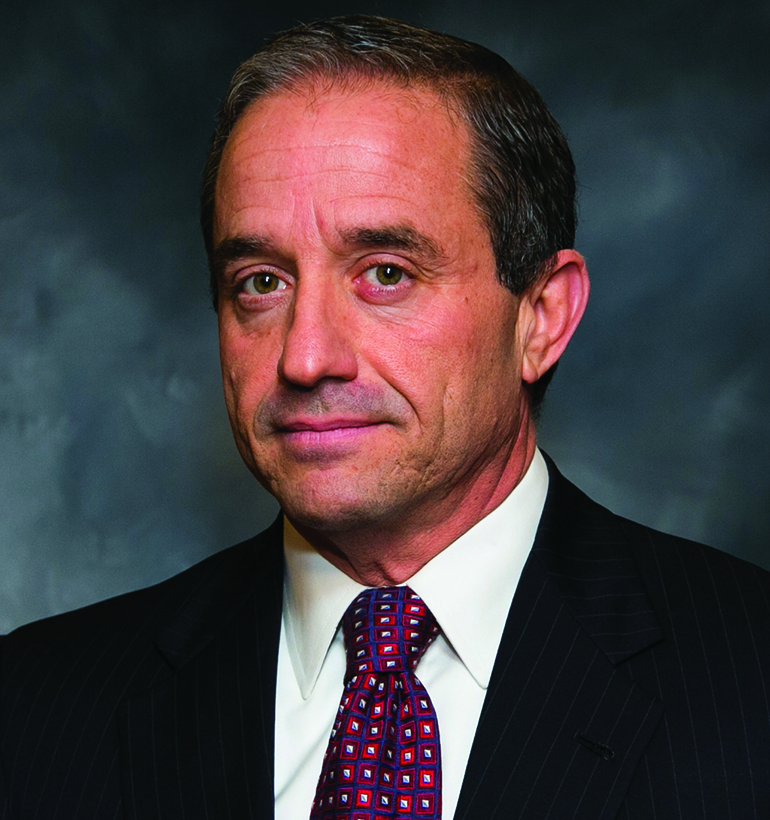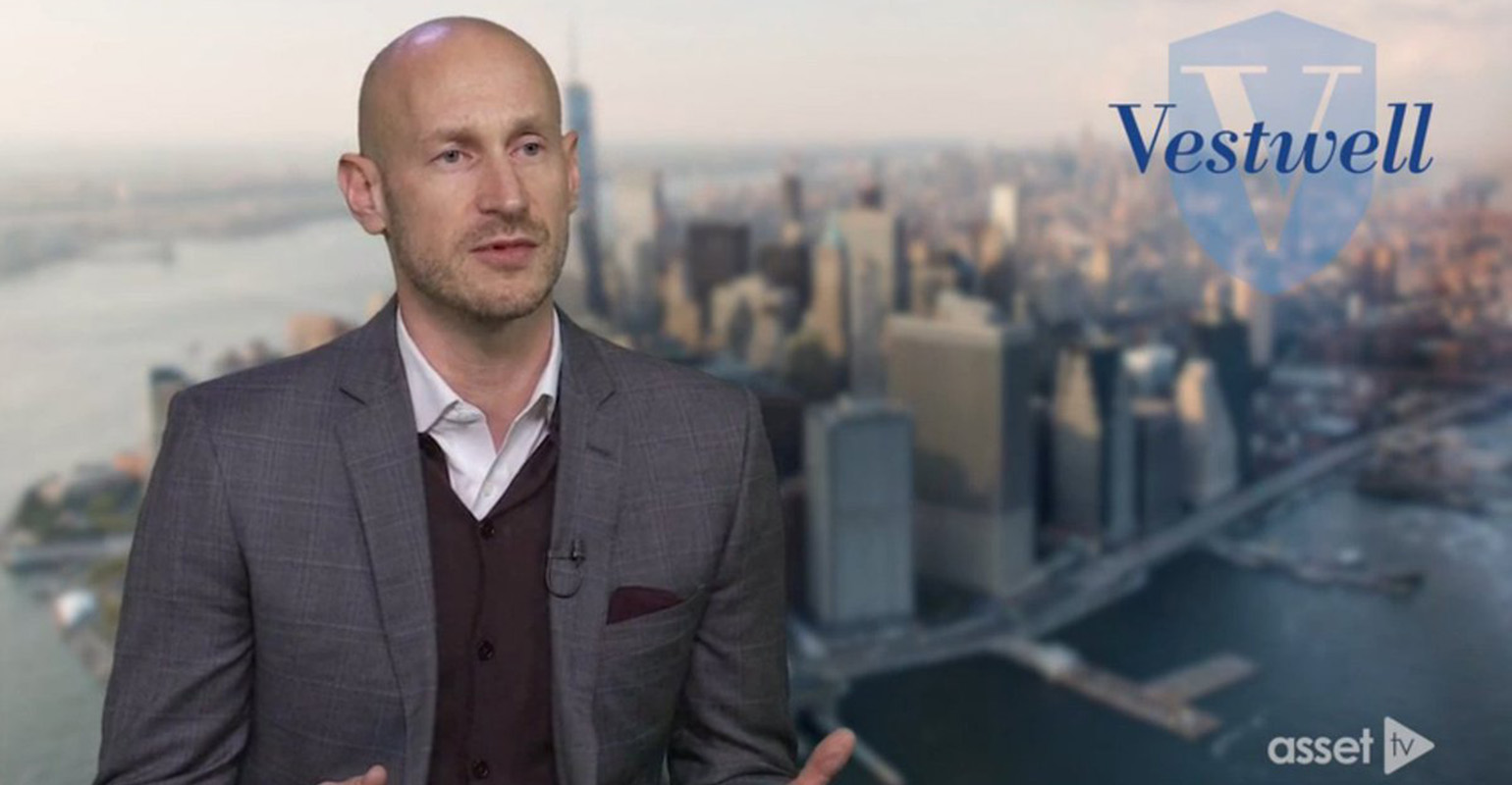For financial advisors looking to build a book of business, workplace retirement plans are a natural temptation.
A single institutional client can yield a sizable book of assets, there are opportunities galore in small- and medium-size businesses, and the tools and resources available from custodians, broker/dealers and other vendors to help advisors tap the market are plentiful. For an advisor slowly building a practice via one retail account at a time, the notion of workplace retirement plans seems disarmingly easy.
But don’t be fooled. Forging a business as a retirement plan advisor takes concentrated effort, an understanding of, and yielding to, more complex ERISA rules and regulations than most retail advisors are accustomed to, more demanding client presentations and, to top it off, thinner profit margins.
“It’s hard to dabble,” says Jamie Greenleaf, principal and lead consultant with Caffaro Greenleaf in Red Bank, N.J., a retirement plan advisor that oversees 75 plans with $2.2 billion in assets. “You have to be focused on retirement programs. It’s difficult to break into the market unless you’re willing to starve for a couple of years.” And unless you can partner “with someone who has the expertise” to ensure you are prospecting effectively and serving the clients appropriately, it’s likely more effort than it’s worth if an advisor’s goal is to simply add retirement plans to their firm’s service offerings.
Brian Lampsa, an advisor with True North Retirement in Chicago, which oversees 35 plans with $587 million in assets, agrees. Most wealth managers stay out of the space, because “the learning curve is free, but steep,” he says. “And the margins are skinny.” Lampsa’s advisory career started in 1992, but he didn’t close his first 401(k) plan until 1999. “I stumbled into it,” he recalls, noting while there were “a lot of people slinging products, nobody was consulting” on retirement plans. He had found his niche, helped by the fact that “I found I was better in the boardroom than the living room.”
John Vento, founder and principal of Comprehensive Wealth Management Group in Staten Island, with $100 million in assets under management, says many advisors are drawn into the retirement plan space by business-owning clients that want to offer something to their employees. But here too, advisors should be cautious, because there are no cookie-cutter solutions. The paperwork involved in starting and running the plan is one thing, he says, “but understanding the ins and outs of each plan makes all the difference in the world when it comes to advising your clients.”
Rob Cirrotti, Pershing’s managing director and head of retirement solutions, says that while the ERISA rules governing retirement accounts are a “gorilla,” the trepidation of whether a retirement plan advisor has to be a fiduciary or not has largely been answered. “It’s clear now that if you are serving the retirement space, you are a fiduciary; you have to jump in with both feet.” The complexity around that scares some advisors off; for others, it’s an opportunity.
The good news is that “there’s a massive amount of resources to become an expert,” Lampsa says, starting with the National Association of Plan Advisors. In addition, custodians and technology vendors are breaking down many of the barriers that siloed advisors into either retail-facing or institutional markets, and plan sponsors are getting more savvy about fees and costs and looking for options away from traditional providers.
Opportunities and Challenges
Start by getting up to speed with ERISA regulations governing retirement accounts, Lampsa says. “Every ERISA attorney publishes articles for free. Every fund company has a DCIO wholesaler whose job is to distribute their company’s funds” into retirement plans “turning generalists into specialists.” You don’t have to pay for this knowledge, but you have to be committed to it to succeed.
Cirrotti says it’s important to clearly define the role you want to play for these clients. A natural extension of the wealth manager’s role is to serve as the investment expert—selecting and monitoring the investment options. Should advisors want to expand their roles, “they might want to be the plan manager and the service provider,” while more technically savvy advisors might want to become plan technicians to help with optimal plan design around the specific needs of participants, perhaps also tracking their financial wellness.
In advisors’ favor is that this is a market dominated not by a few giant companies, but hundreds of thousands of small players.
According to a February 2018 report from the Department of Labor, there are 648,252 defined contribution plans in the U.S., of which 546,896 are 401(k) plans. Nearly 481,000 of those plans have fewer than 100 participants, but with a total of $600 billion in assets.

“I found I was better in the boardroom than the living room,” says Brian Lampsa, an advisor with True North Retirement in Chicago.
“Insurance companies dominate that space,” says Skip Schweiss, president of TD Ameritrade Institutional’s Retirement Plan Solutions Platform, and many have high, hidden costs, expensive investment options and high advisory fees, he says. “When we see an advisor going in to pitch against an insurance company, the advisor can win every time.”
The opportunity in the smaller retirement space is significant, agreed Phil Chisholm, head of Fidelity’s 401(k) business for advisors, citing his firm’s recent survey of plan sponsors which found that 38 percent are actively looking to change their advisors. The reason, he believes, is that many current plan advisors “don’t do a good job of articulating their value” to the plan sponsor.
Finally, retirement planning certifications have flooded the market, some more robust than others in terms of their educational requirements, but are they necessary to be successful in this space? Greenleaf says plan sponsors “don’t understand the designations, and I don’t know if they really care.” Lampsa is only slightly more positive on retirement designations, acknowledging only that they may be “helpful for knowledge and, possibly, marketing.”
Data Mining for Prospects
One of the benefits of the retirement plan market is that it’s a business-to-business sale, Lampsa says. While retail wealth management prospects can be hard to find, every workplace retirement plan files a Form 5500 with the Department of Labor, with details on fees and providers. It’s a prospecting goldmine.
The data on all those plans can be accessed for free by anyone from the DOL directly or by using third parties, like BrightScope or FreeErisa, to search and sort the DOL data. It’s easy to become overwhelmed by the amount of information, which is why some vendors have brought the data into their platforms for retirement plan advisors.
Plan Finder, part of the Smart Prospecting feature on TD Ameritrade Retirement Plan Solutions’ platform, accommodates more than 30 custom search criteria, allowing advisors, for example, to “zero in on the $1 million to $5 million space,” said TD Ameritrade Institutional Sales Consultant Mike Lyons. The search results can be downloaded as an Excel file, and advisors can then use their internal mail merge function to contact and follow up with specific plan sponsors.
Advisors also have access to the fees those plan sponsors are paying, giving advisors an opportunity to craft a pitch around lower costs, says Schweiss. “Advisors can go into our plan database, can sort for all plans charging 200 basis points and then can go in and charge 150 bps all in.”
Chisholm advises that the “most important thing is aligning with centers of influence for plan sponsors,” such as CPAs, attorneys, and to have those networking discussions first rather than cold calling. If your business plan includes supporting plan participants, “do so very carefully” to ensure it aligns with your business model. “Don’t overextend yourselves,” he warns. “You can only add more plans up to a point,” he said.
Pershing launched a Retirement Plan Network offering to its registered investment advisor and broker/dealer clients three years ago in part to help advisors deal with the uncertainty around the DOL’s fiduciary rule. Now that the rule “has faded from people’s minds,” Pershing plans to launch this year a tool, available through its NetX360 platform to help automate oversight of retirement plans for both RIAs and b/ds, especially larger firms. The tool will be in beta during the second quarter, with a broader rollout likely by mid-year, says Cirrotti.
Envestnet also uses the Form 5500 database, says Babu Sivadasan, after “we clean and scrub” the DOL data. Sivadasan, group president with Envestnet | Retirement Solutions, says his firm serves advisors with “small books and large,” with some larger firms licensing Envestnet’s technology, while other, smaller wealth managers use it for prospecting, investment research, plan design and even serving plan participants, using a help desk to get answers to their questions. Sivadasan says Envestnet will also serve as an ERISA 3(21) or 3(38) fiduciary to plans when requested.
While any retirement advisor can “come to ERS directly,” its advisors who are already on Envestnet’s platform can benefit from using its services, Sivadasan suggests. Since ERS is “tightly integrated” with Envestnet’s wealth management platform, it’s easier for an advisor to prospect, sell and run plans through one platform. There’s another benefit to being on the broader Envestnet platform: It gives an advisor access to the data aggregation available through Yodlee. “That was the whole rationale for us acquiring Yodlee,” Sivadasan says, referring to Envestnet’s 2015 deal. “Data aggregation gives you a whole financial picture” which allows advisors to provide “more effective advice,” within or without retirement plans.

“Understanding the ins and outs of each plan makes all the difference in the world when it comes to advising your clients,” says John Vento, founder and principal of Comprehensive Wealth Management in Staten Island.
Advisor Vento’s admonition “to always ask for advice” when it comes to advising retirement plans has a name at his b/d: Carol Ventura, who is retirement services manager at H.D. Vest, many of whose reps, like Vento, are also accountants. Ventura focuses on educating and providing marketing resources to advisors to help them grow their retirement plan books of business: “We can get you educated so you can give your client a good answer” to their retirement plan questions. She corrals her internal team and outside consultants like ERISA lawyers, third-party administrators and actuaries to build proposals to business owners based on each firm’s employee census data.
A common situation Ventura sees is that an advisor will say, “I have this client who has five employees, what are the best retirement plans for the client.” After an analysis of the appropriate plans and after “getting the data” on the company, she finds that “often that five-person employer thinks they want a 401(k) when a SEP IRA is more appropriate for their tax situation.”
Ventura says that many small business owners are more receptive to starting retirement plans because of an “explosive growth” in their profitability. Wearing their accountant’s hat, the advisor works to reduce the tax liability faced by the business owner by launching a retirement plan for employees. One argument for doing so? “We say, ‘Who would you rather pay, the IRS or your employees? Who’s more important to you?’”
Fees, Expenses and Designations
What about those “skinny” fees that Lampsa cites for advising retirement plans? TDAI’s Schweiss says that an advisor might expect to charge her typical wealth management fee of 100 basis points on smaller plans, though typical advisor fees for larger plans fall pretty quickly, to 50, 20 or even 10 bps.
Fidelity’s Chisholm says that when the DOL issued in 2012 its 408(b) fee disclosure rule, it “put a spotlight on fees; we feel it as a record keeper,” despite the fact that “the lowest-cost option isn’t always the best option.”
When it comes to expenses, however, advisor Greenleaf says “people forget that you get what you pay for,” and that “our job is to be as transparent as possible” to the plan sponsor, focusing on outcomes that are valued by the company’s employees. “Make sure the costs are reasonable; we’ve done a disservice to the industry by focusing on fees alone” without also focusing on the benefits made available to the end client.
A “Shock Absorber” with Personal Benefits
It’s not uncommon for advisors to a retirement plan to pick up some clients for their standard wealth management offerings. That may be the business owner, or a highly compensated employee, or even a modestly compensated employee that experiences one of those “liquidity events” that prompts a consumer of more modest means to find an advisor. TDAI’s Schweiss knows of a Denver-based advisor who after getting into advising a retirement plan got a call from an administrative assistant in the plan sponsor’s HR department. Her mother had just passed away and left her $1 million. “It’s one anecdote,” says Schweiss, “but it can happen.”
But there’s another, sometimes overlooked, benefit to wealth managers in advising 401(k) plans, says Schweiss. “Your individual wealth management clients are not adding money to their accounts every time they get paid,” he points out, while plan participants “are adding to their retirement accounts” with every paycheck.
Making 401(k) plans part of your practice “can put a cushion under the downdrafts” of the markets, Schweiss says, such as the pullback of late January and early February. So, if retirement plans are a “big part of your business,” says Schweiss, “it’s a shock absorber” for your wealth management business.
Research shows that once they sign up for a retirement plan, most plan participants are pretty passive when it comes to their accounts. “Most employees don’t pay that much attention to their 401(k)s,” Schweiss agrees, but that, he says “is actually good” for the plan advisor and her fees, since “this is long-term money; they just keep putting it away.”
That business benefit can be matched by a personal reward for advisors who are interested in serving others, helping them make a difference not just among the wealthy, but also among the lower-net-worth plan participants their plans serve.
“The reason I got into the retirement plan business was because it gave me the ability to change lives,” Lampsa says. Given the economics of the wealth management business, that’s hard to do on an individual level with people who don’t have a significant portion of investable money; but it is possible in the retirement plan space. “The most successful advisors in this area have some of that altruistic DNA. They want to help plan participants and reach a broader audience.”
And yes, there’s a business benefit as well, Lampsa says. “Because you’re reaching more people, some of them might want to do business with you.”

Vestwell Founder and CEO Aaron Schumm
Robo Retirement
Since prospecting, selling and servicing retirement plans is such a complex, often inefficient, market, spread across many different stakeholders, it’s no surprise there has been a rise of digitally focused vendors seeking to reduce the inherent friction in building, implementing and servicing 401(k) plans. One of the more prominent is Vestwell, which calls itself the industry’s “first and only fiduciary-backed retirement platform for the financial advisor.”
Led by Founder and CEO Aaron Schumm, a serial entrepreneur who previously built and then sold FolioDynamix to a private equity firm (which then sold it to Envestnet), Vestwell still qualifies as a startup, but has recently been busy not just in finding additional capital but in partnering with advisor-focused firms like Riskalyze and Morningstar. They’ve added to their advisory board high-profile industry names like Josh Brown of Ritholtz Wealth Management and Lori Hardwick, formerly of Envestnet and Pershing, who recently founded Advisor Innovation Labs.
One of Vestwell’s earliest investors was Fidelity’s venture capital arm, and Schumm stresses the platform is built on a mutli-custodial, multi-recordkeeping approach. “We don’t compete with Schwab and TD Ameritrade,” Schumm says.
Schumm says the lack of the necessary scale and structure for advisors to serve multiple retirement plans “was the whole reason we built” Vestwell. Since “90 percent of DC plans are less than $5 million and a half-million employers don’t have plans,” the small retirement space is a massive business opportunity. Add to that the fact that “people need 401(k)s” and that “expenses must be mitigated, they can be egregious in the small space,” and the opportunity is ripe for fiduciary RIAs.
Most experts in the retirement plan space suggest an advisor can’t profit from running only a few retirement plans, but Schumm begs to differ. “They should dabble; they know their clients best” and thus are best positioned to take on their business-owning clients’ corporate retirement plan.
Vestwell’s approach is a website platform that is the single “touchpoint for the advisor, plan sponsor and participant.” Using that platform and Vestwell’s tendrils into the investing world, an advisor can pick investments for a plan, and can create and send a proposal to a plan sponsor in “three to five minutes,” compared to the “one to two weeks with a Vanguard.”
The plan sponsor client receives an email and can view the proposal on Vestwell platform. If the business owner agrees, the sponsor’s payroll and employee census file is uploaded and the employees gets an email with the details.
The plan advisor’s life is made easier, since all the information needed to service the sponsor and the plan recipient “is all on the dashboard for the advisor.” Vestwell also provides guidance on what the advisor’s fee should be, based on benchmarking data.
So how does Vestwell get paid? “Think of us an unbundled TAMP,” says Schumm. “We charge a fee to the company and the participant.”
So far, some 70 RIAs have signed on to the platform. Recently, Vestwell signed a deal with Riskalyze, the risk tolerance platform, which will mean Vestwell will also be available to some 20,000 of that firm’s clients.





